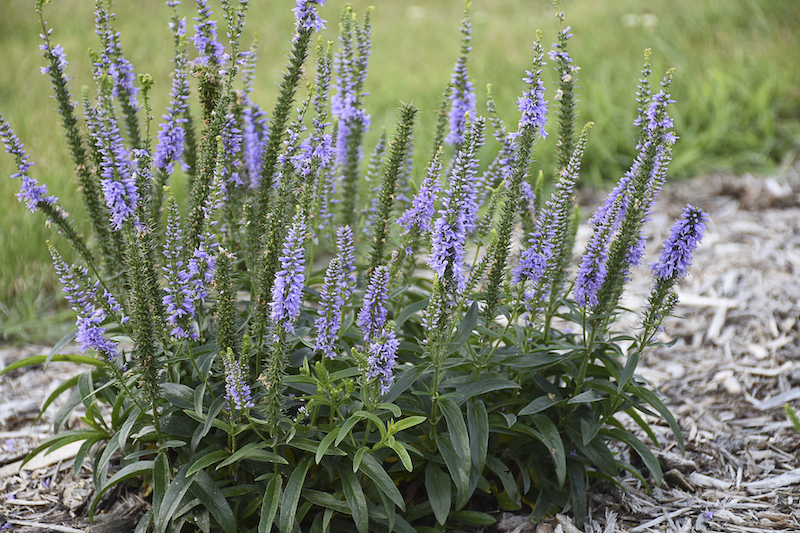Speedwell is a hardy perennial that will need less supplemental watering as the plant matures. Drought tolerance is one of the plant's better traits. Watering newly planted Speedwell from the start will ensure vigorous and deep root growth that is better able to withstand periods of heat and drought.

How To Tell If Speedwell Needs Watering
Signs of underwatering for Speedwell are similar to signs of overwatering. Leaves that are drooping and/or turning brown at the tips can indicate watering problems. Flower spikes that are falling over or a plant that appears to be opening flat from the center are indications that it is very underwatered. Consistent use of a biodegradable mulch around the base of Speedwell will help to keep the soil cool and moist during the height of the summer heat.
How Often To Water Speedwell
Speedwell needs consistent watering in the early stages of growth. One inch of water distributed over two sessions will help roots develop deep in the ground. Speedwell in containers will need slightly more watering. The soil should not dry out more than 1 inch below the soil surface in between watering's.
Once fully established, Speedwell needs little extra irrigation. A long soaking with drip irrigation or a soaker hose once every 10 days to 2 weeks is generally enough, especially if your climate gets summer rains. During extended periods of hot and dry weather, watering should be done once a week with at least ½ inch of water. Be careful not to over water Speedwell. The roots can rot quickly.
Speedwell in containers should be monitored for moisture on a daily basis during blooming or very hot and dry periods. The soil should never get drier than the top 2 inches. Water the containers long enough to see water coming out of the bottom drainage holes. This will ensure that all of the soil is saturated evenly.

Best Time To Water Speedwell
Watering for many plants is better done early in the day, while the soil may still be damp from dew. This ensures that the supplemental water will soak deep in the soil. Also, any foliage that gets wet from the watering will have time to dry off during the day. Wet foliage on some plants leads to fungal and mildew disease. Speedwell is susceptible to mildews, especially late in the summer during humid weather. Keeping the leaves dry is the best way to keep a plant healthy.
Winter watering is not often needed. Speedwell goes dormant, even in the warmer hardiness zones. Too much water during the cold winter months will cause root rot and kill the plant.
How to Water Speedwell
Step 1 - Check the soil to see if it is damp under the surface
Sandy soils dry out the fastest. Soils with a higher clay content will retain moisture for longer at lower levels in the ground.
Step 2 - Use drip irrigation or soaker hoses to water
The water will be put right where it needs to be–the root zone–with less moisture lost to evaporation or runoff
Step 3 - Hand watering with a watering can or hose-end sprayer
Thoroughly soak the soil until water puddles on the surface. Wait for a few minutes for it to soak in and then apply more water.
Step 4 -Let Speedwell plants dry out in between watering sessions
Speedwell Watering Tips
- Water well when plants are young to establish a deep root structure
- Make sure to let plants dry out a bit between watering's
- Re-evaluate the need for watering after a heavy rain
- Supplemental watering may be needed even for mature, established plants during long periods of heat and drought
 |
Author Robbin Small - Published 7-22-2022 |
